32 Types of Yellow Flowers (with Pictures)
-
- Last updated:

Flowers can symbolize and convey various feelings and events, ranging from friendship to toxicity. However, the happiest of all the flowers are yellow ones. Yellow flowers add a lot of vibrant life to any garden or bouquet.
If you want to learn more about yellow flowers, you’ve come to the right place. We will walk you through over 30 of the most popular types of yellow flowers that you can add to your garden!

The 32 Types of Yellow Flowers
1. Begonia

| Scientific Name: | Begonia |
| Hardiness Zones: | 6-9 |
| Height: | 8-24 inches |
The Begonia is a perennial with over 2000 species belonging to the plant. Because there are so many species, Begonias can come in many patterns and colors, one of which is yellow.
In addition to their gorgeous appearance, Begonias often symbolize friendship, hope, and kindness. Consider adding these flowers to your garden if you want to add kindness and hope to the area.
2. Billy Buttons
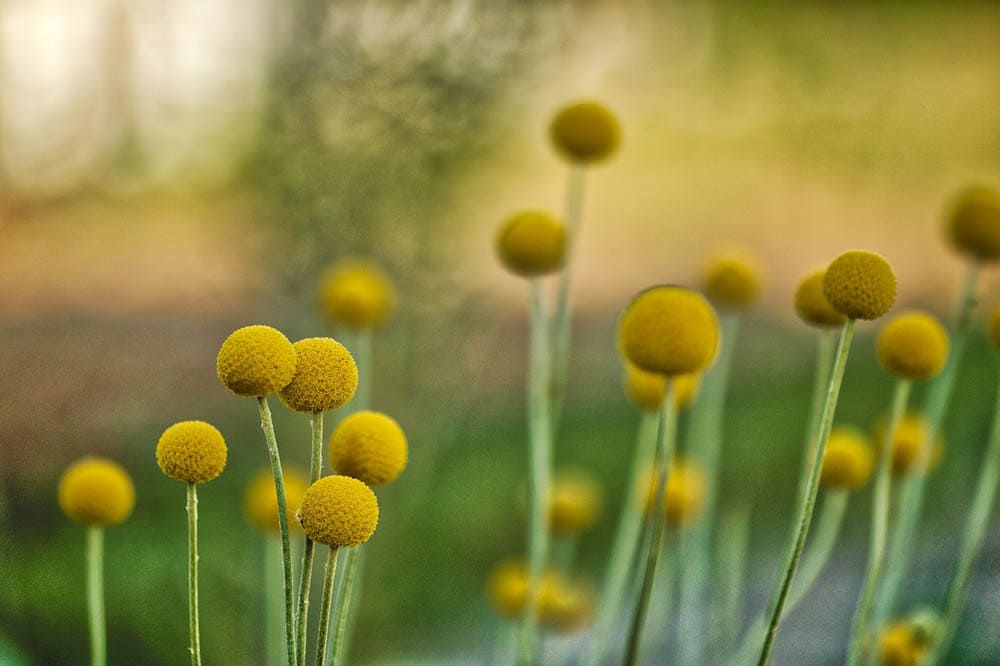
| Scientific Name: | Craspedia globosa |
| Hardiness Zones: | 8-11 |
| Height: | 4-24 inches |
Billy Buttons are a super neat yellow flower to select. Instead of having traditional petals, Billy Buttons have gorgeous yellow button heads or wooly heads. This makes these flowers a great choice as filler for a unique garden or bouquet.
Often, Billy Buttons are used in cut arrangements and dryings. The tiny yellow golf ball-like blossoms top the stalks and look downright gorgeous and unique.
3. Bird’s-Foot Trefoil
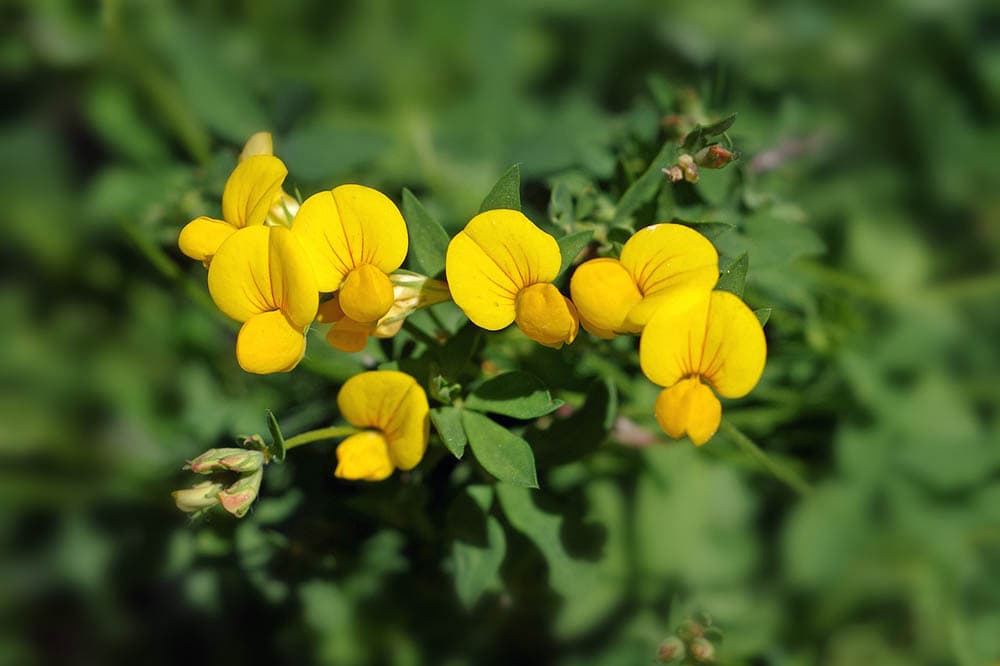
| Scientific Name: | Lotus corniculatus |
| Hardiness Zones: | 1-8 |
| Height: | 12-24 inches |
Bird’s-foot trefoil gets its name because of its unique seed pods. Its seed pods almost look like bird feet. If you live in North America, be careful before planting bird’s-foot trefoil since they are considered an invasive species.
4. Canna Lily

| Scientific Name: | Canna |
| Hardiness Zones: | 9-10 |
| Height: | 48-72 inches |
Canna lilies come in 10 different species. Despite their name, these flowers are not true Lilies. Instead, they are similar to gingers, arrowroots, and even birds of paradise.
What makes these flowers stand out is their beautiful foliage. The leaves themselves are a vibrant yellow, but they can come in other colors as well. On these leaves, you will often see stripes of purple, green, red, and other colors.
5. Cinquefoils
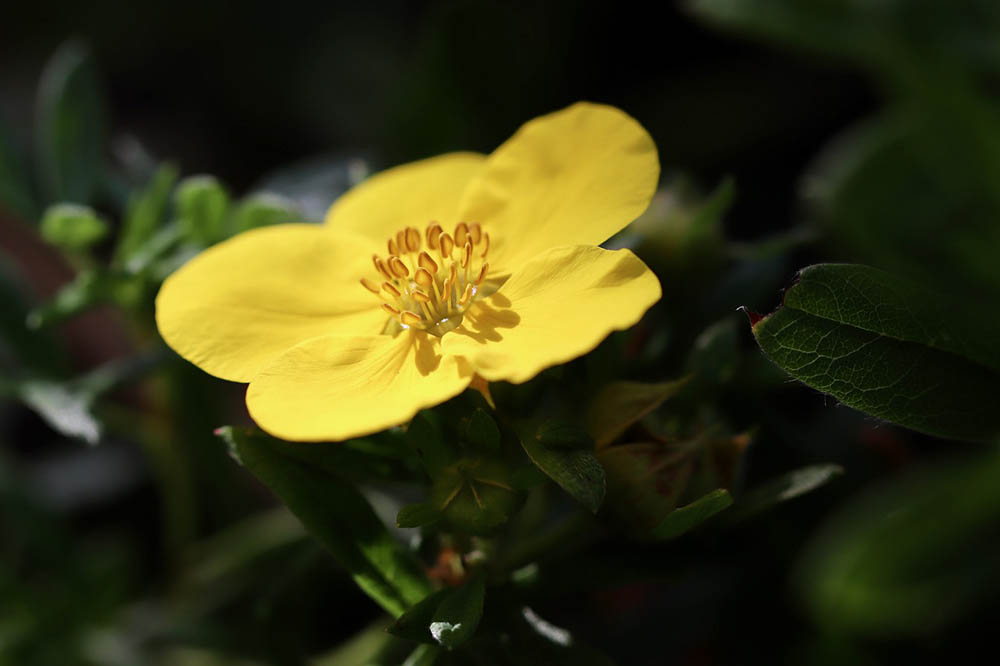
| Scientific Name: | Potentilla |
| Hardiness Zones: | 3-7 |
| Height: | 12-36 inches |
Cinquefoils are great if you live in cold environments. These winter-hardy flowers can grow in zones 3 through 7. Plus, they are incredibly easy to grow, even if you have little gardening experience.
Despite their small appearance, these flowers actually belong to the rose plant family. These flowers are all perennials and include plants, shrubs, and vines.
6. Common Hyacinth
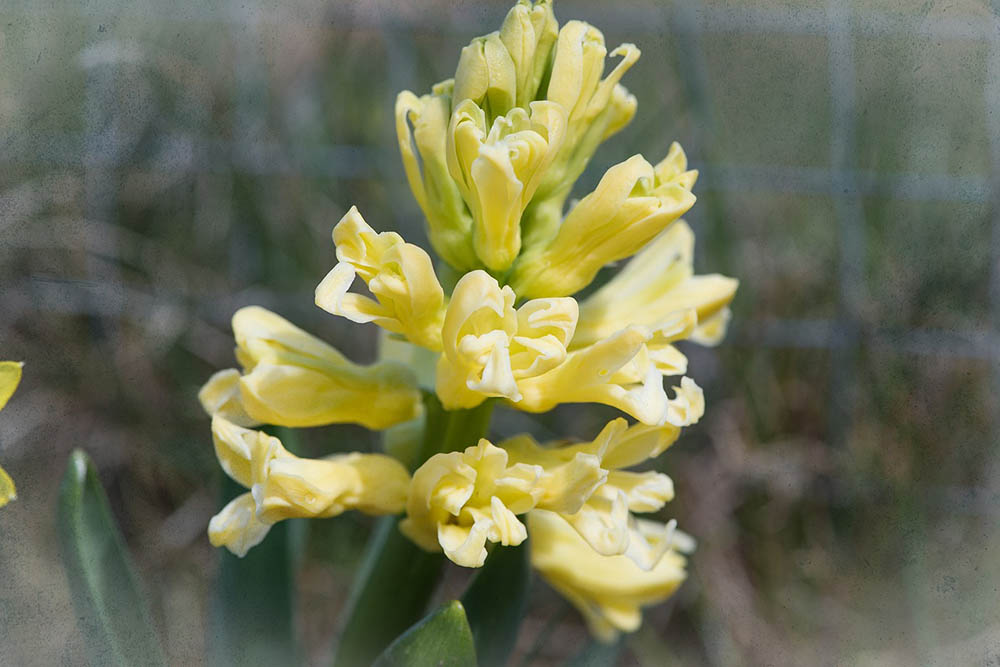
| Scientific Name: | Hyacinth orientalis |
| Hardiness Zones: | 4-8 |
| Height: | 6-12 inches |
The common hyacinth comes in many varieties. If you want a yellow hyacinth specifically, you should consider the Yellow Queen hyacinth, Yellow Stone hyacinth, and Gypsy Princess hyacinth, all of which are yellow.
7. Cowslip
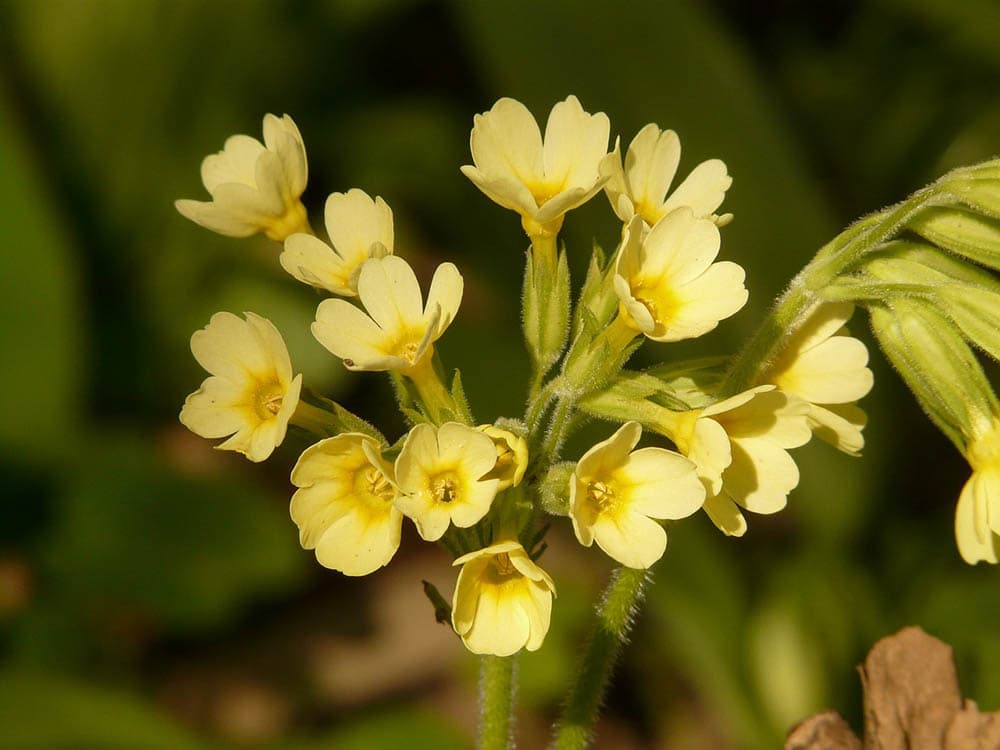
| Scientific Name: | Primula veris |
| Hardiness Zones: | 5-9 |
| Height: | 8-10 inches |
The cowslip belongs to the primrose family. On top of the stem, you’ll find clusters of yellow flowers shaped like bells. These flowers are native to temperate regions, but they’ve been hybridized with other plants to produce other flowers.
8. Dahlia
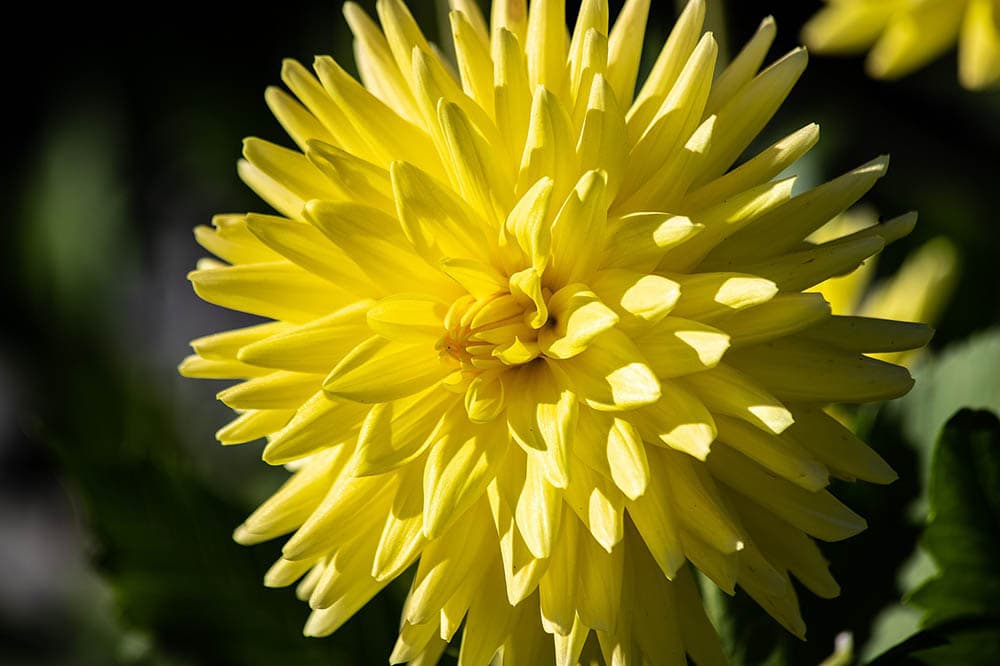
| Scientific Name: | Dahlia |
| Hardiness Zones: | 8-11; 3-7 |
| Height: | 15-72 inches |
Over 42 flowers belong to the Dahlia genus, allowing dahlias in practically every color. They’re even more hybrids, and cultivators often exchanged amongst florists due to their disc and ray florets.
You can get dahlias as perennials or annuals. If you select a perennial, they need to be kept in hardiness zones 8 to 11, whereas annuals need to be kept in hardiness zones 3 through 7.
9. Daisies
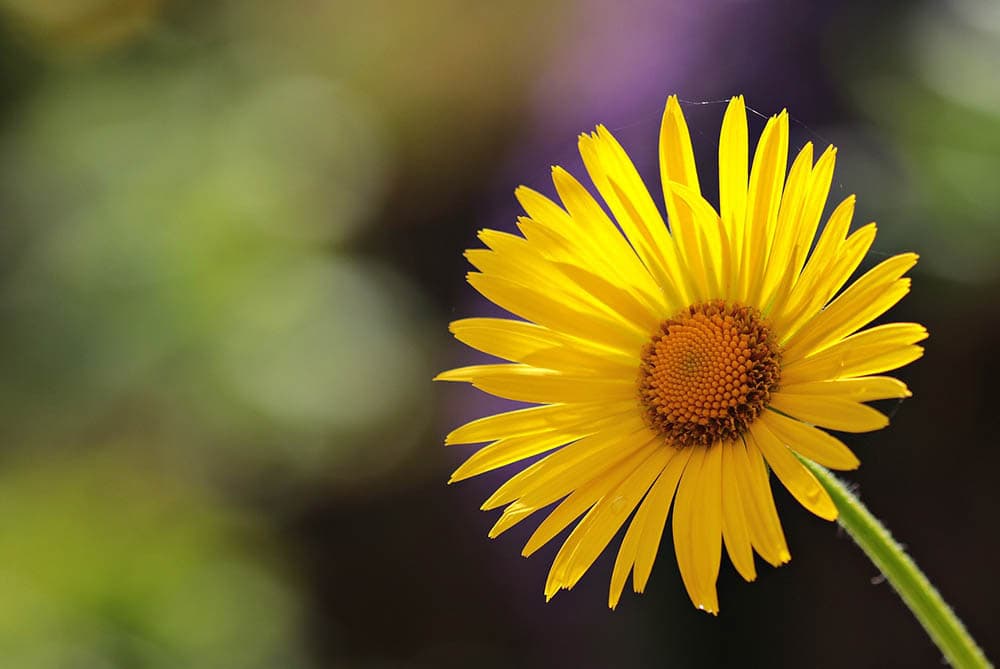
| Scientific Name: | Asteraceae |
| Hardiness Zones: | 5-8 |
| Height: | 36-48 inches |
Daisies are one of the most popular types of yellow flowers. There are nearly 2000 plants in this category, with over 32,000 species of Daisy flowers specifically. Daisies, asters, and sunflowers all fall into this same family.
Because there are so many daisies, you can almost always find one to match your garden and location. You can also find daisies that match your specific styling choice since they come in so many shapes, sizes, and colors, including yellow.
10. False Indigo
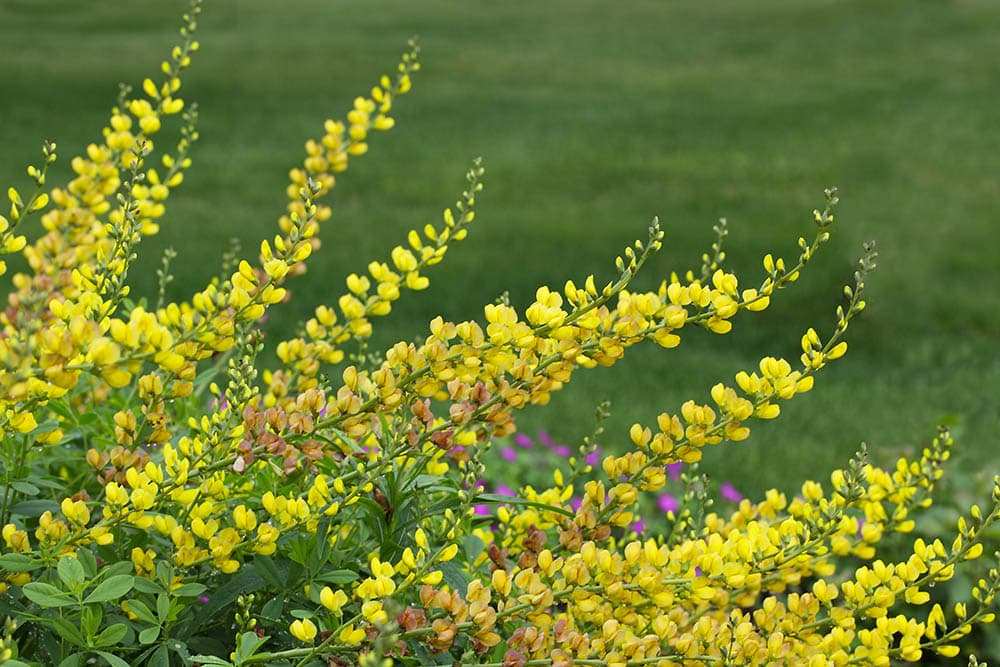
| Scientific Name: | Baptisia sphaerocarpa |
| Hardiness Zones: | 3-9 |
| Height: | 36-48 inches |
False indigo is named because it looks like the indigo plant, but it has yellow petals. Other names referring to this plant include yellow wild indigo, bush pea, and yellow wisteria.
False indigo makes a great choice for informal gardens, as well as cottage gardens. They are also planted in prairie meadows for wild cultivation because of their gorgeous appearance.
11. Freesia
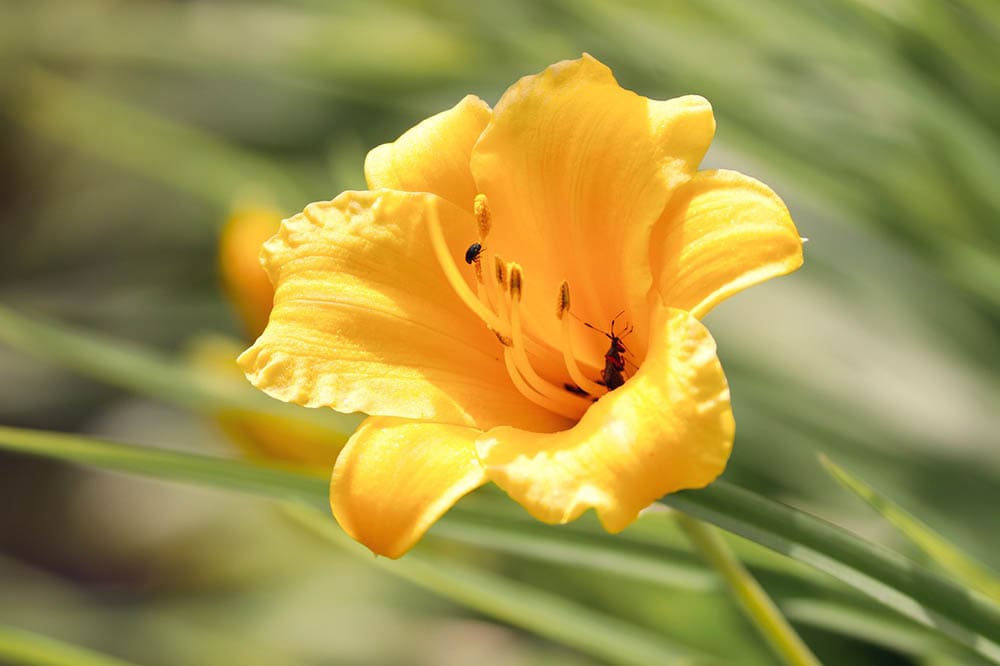
| Scientific Name: | Freesia |
| Hardiness Zones: | 9-10 |
| Height: | 12-24 inches |
Freesias have many flowering perennials that belong to the Iris family. These flowers come in many colors, including yellow, and have a distinctive trump shape. These flowers are known for having a sweet yet soapy fragrance.
12. Honeysuckle
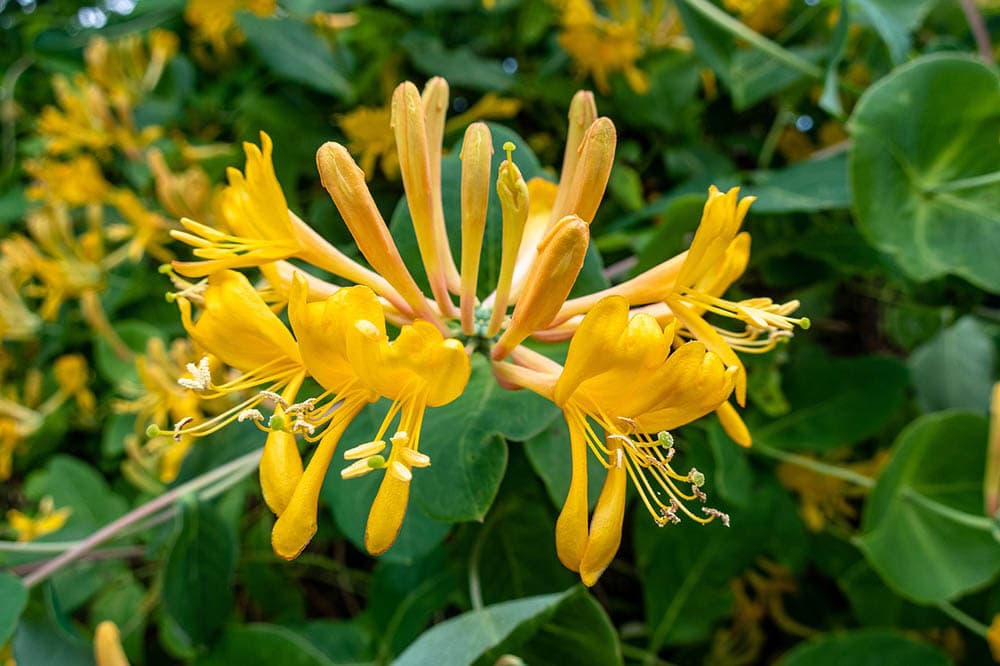
| Scientific Name: | Lonicera |
| Hardiness Zones: | 5-9 |
| Height: | 10-30 feet |
Depending on where you live, honeysuckle may bring up very intense memories of childhood. That’s because these flowers are known for their fragrance and the sweet nectar that children love to try.
In addition to children, honeysuckles are loved by hummingbirds. If you want to attract these gorgeous birds to your home, honeysuckle is one of the best yellow flowers to grow.
13. Jonquil

| Scientific Name: | Narcissus jonquilla |
| Hardiness Zones: | 4-8 |
| Height: | 6-12 inches |
Sometimes called the rush daffodil, the jonquil is a bulbous flowering plant native to the areas around Spain and Portugal. It has been developed to grow readily in Europe and the United States as well.
The bulb on the jonquil clusters up to form trumpet-shaped flowers, which are usually yellow or white. The jonquil is often associated with spring, rebirth, and renewal.
14. Lantana
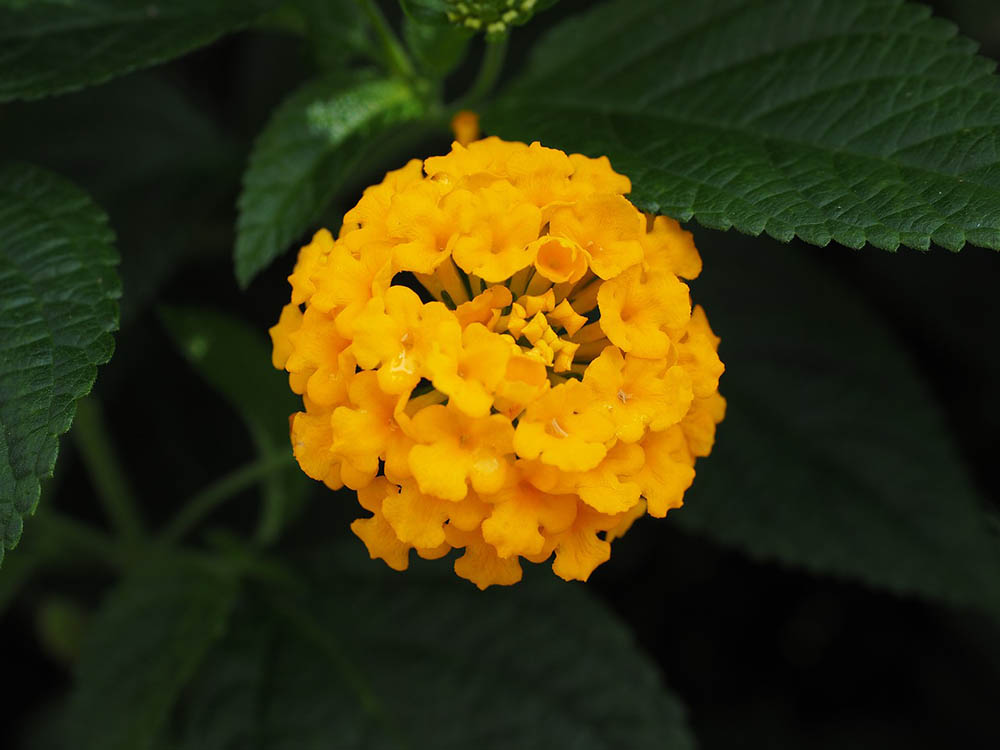
| Scientific Name: | Lantana |
| Hardiness Zones: | 8-11 |
| Height: | 5-6 feet |
Lantana flowers can be found in tropical regions, such as in America and Africa. They have become especially popular in Australia to the point that they are now an invasive species there.
Still, lantana flowers are great if you live in hardiness zones 8 through 11. Since they spread easily, it’s best to grow them in controlled locations, such as in containers. With careful eyes, these flowers can attract a lot of pollinators without invading the community.
15. Leopard Plants
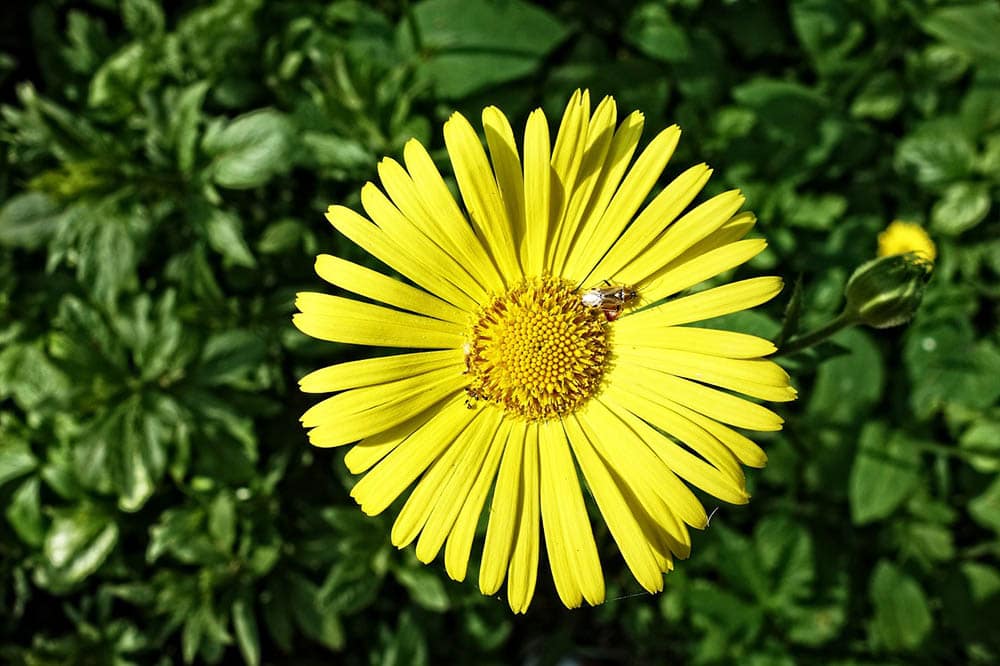
| Scientific Name: | Ligularia |
| Hardiness Zones: | 4 to 8 |
| Height: | 5 feet |
Leopard plants belong to the daisy family. They are native to central and eastern China, but you can use them for ornamental purposes all over the world. These showstopper flowers thrive in USDA hardiness zones 4 through 8.
These gorgeous yellow flowers are an especially great choice if you want vibrant yellow flowers that also have large petals, allowing the flower to take up a lot of space at once in your garden.
16. Lesser Celandine
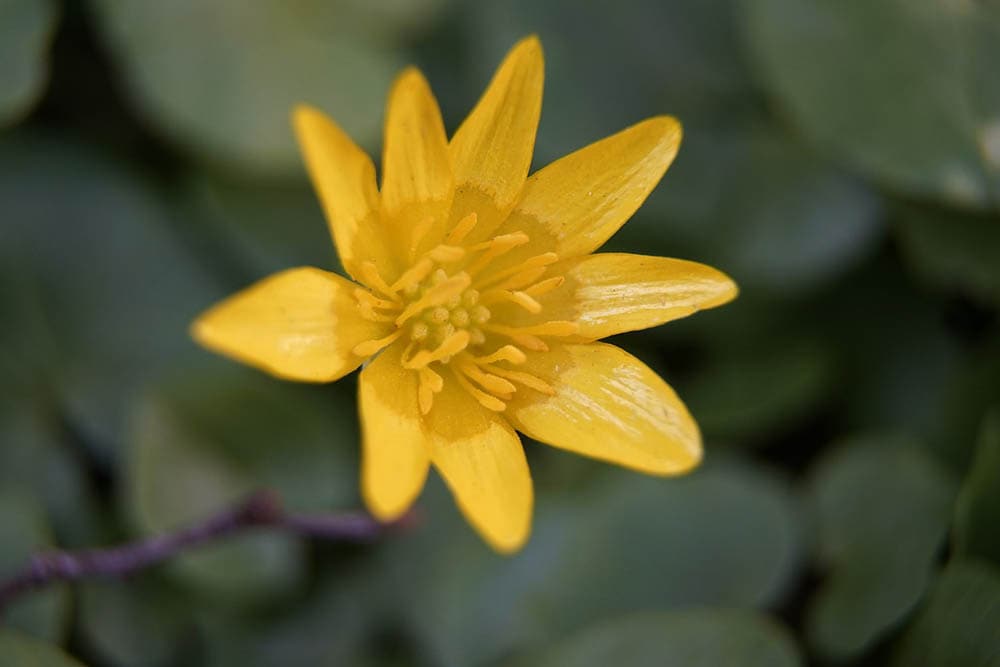
| Scientific Name: | Ficaria verna |
| Hardiness Zones: | 4-10 |
| Height: | 12 inches |
Lesser celandine flowers have tiny heart-shaped leaves that have almost a fleshy texture. Meanwhile, the flowers have 7 to 12 glossy petals that are bright yellow. These petals surround a fuzzy and bright yellow center, making the entire flower portion yellow.
This small flower is native to western Asia and Europe, but it can be found in the United States as well. In fact, the lesser celandine is often known by the name pinwort or fig buttercup in North America.
17. Marigold
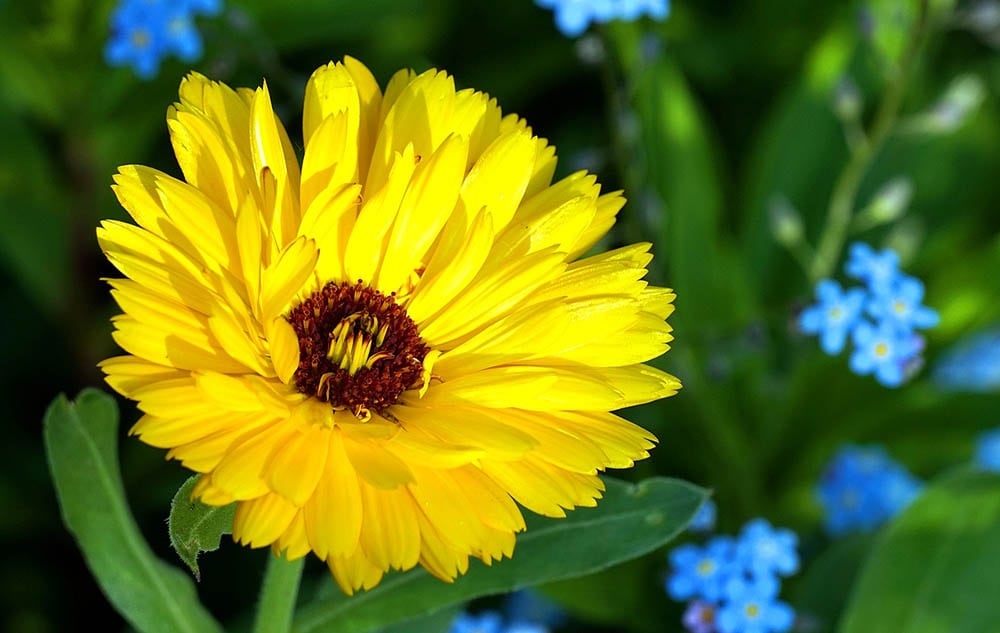
| Scientific Name: | Tagetes |
| Hardiness Zones: | 2-11 |
| Height: | 6-36 inches |
Marigolds are some of the most unique flowers. They have button-shaped florets that almost look like pom-poms when put together. As their name suggests, marigolds have gorgeous golden hues that are easy to admire.
To make this gorgeous flower even better, many marigold species are entirely pest resistant. This means that your flower can help deter a number of rodents, deer, and insects you don’t want in your yard.
18. Million Bells
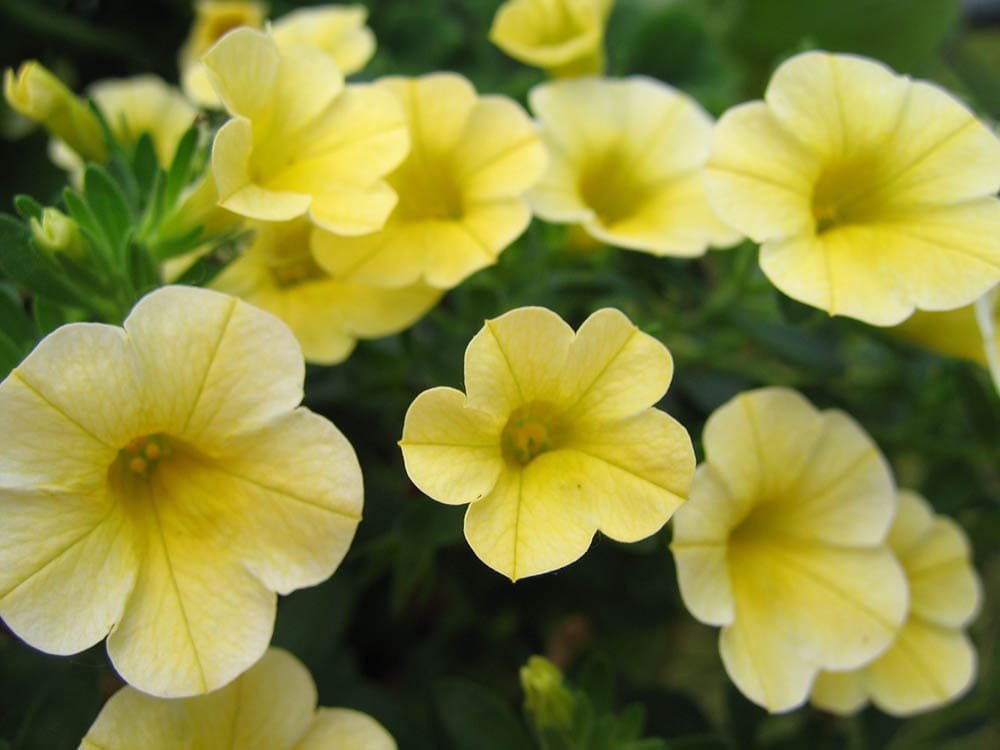
| Scientific Name: | Calibrachoa |
| Hardiness Zones: | 9-11 |
| Height: | 3-9 inches |
Sometimes called the trailing petunia, the million bells plant is a flowering perennial that belongs to the nightshade family. These flowers are petunia shaped and produce a lot of small flowers during the spring and summer.
Million bells can come in many colors, including yellow. They are perfect for window boxes and hanging baskets because of their trailing and overflowing growing patterns.
19. Nemesia
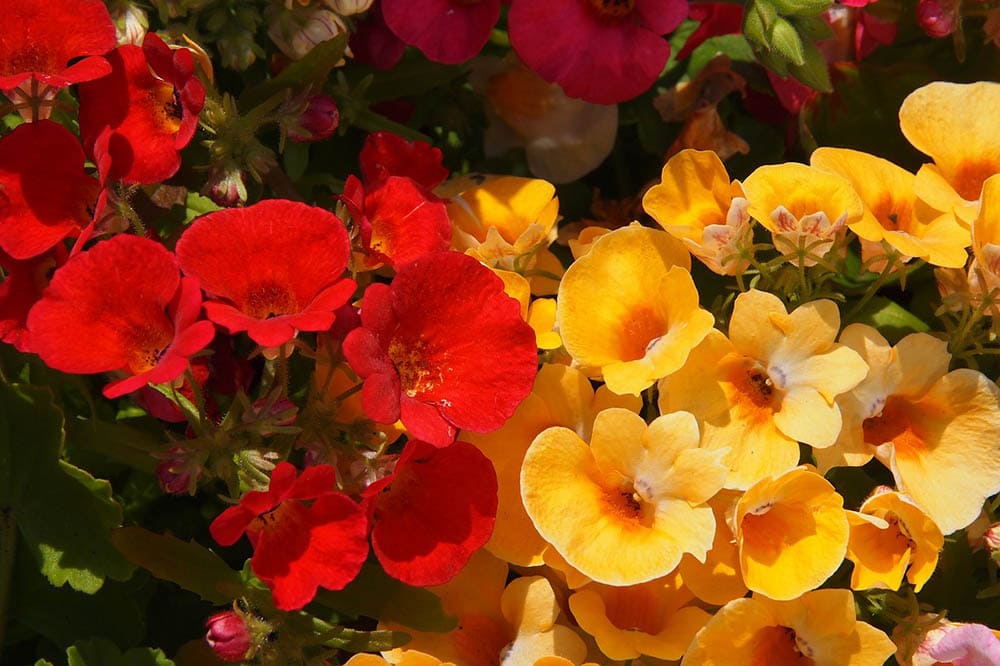
| Scientific Name: | Nemesia |
| Hardiness Zones: | 2-11 |
| Height: | 10-24 inches |
The nemesia is an incredibly hardy flower. It has been grown successfully in a variety of hardiness zones, ranging all the way from 2 through 11. So, this is a great flower, no matter where you live.
20. Pansy
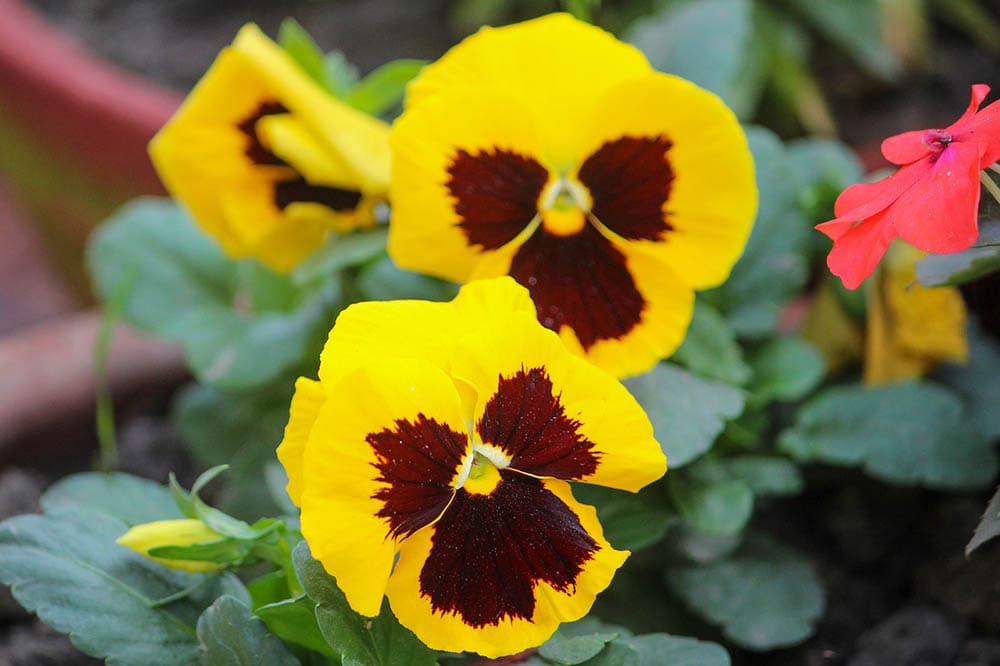
| Scientific Name: | Viola wittrockiana |
| Hardiness Zones: | 6-10 |
| Height: | 6-9 inches |
Pansies are known all over the world. They have beautiful flower faces and typically grow in hardiness zones 6 to 10. These flowers are named because they were associated with remembrance in 15th century France.
21. Red Hot Poker
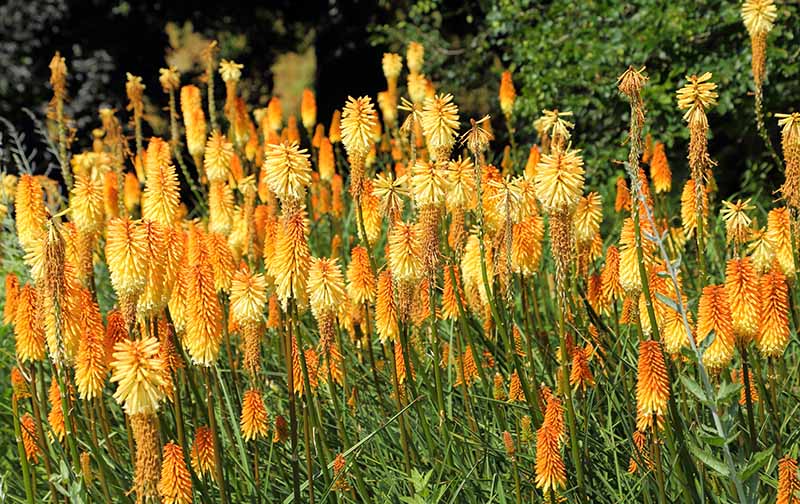
| Scientific Name: | Kniphofia |
| Hardiness Zones: | 5-9 |
| Height: | 12-24 inches |
Despite its name, the red hot poker has flower cones that are often multi-colored or can be yellow, orange, or red. The leaves almost look like grass, but with much more color and pizazz.
In addition to this flower’s colorful appearance, it has many colorful common names as well. You might hear the red hot poker referred to as the poker plant, torch ily, or trinoma.
22. Scotch Broom
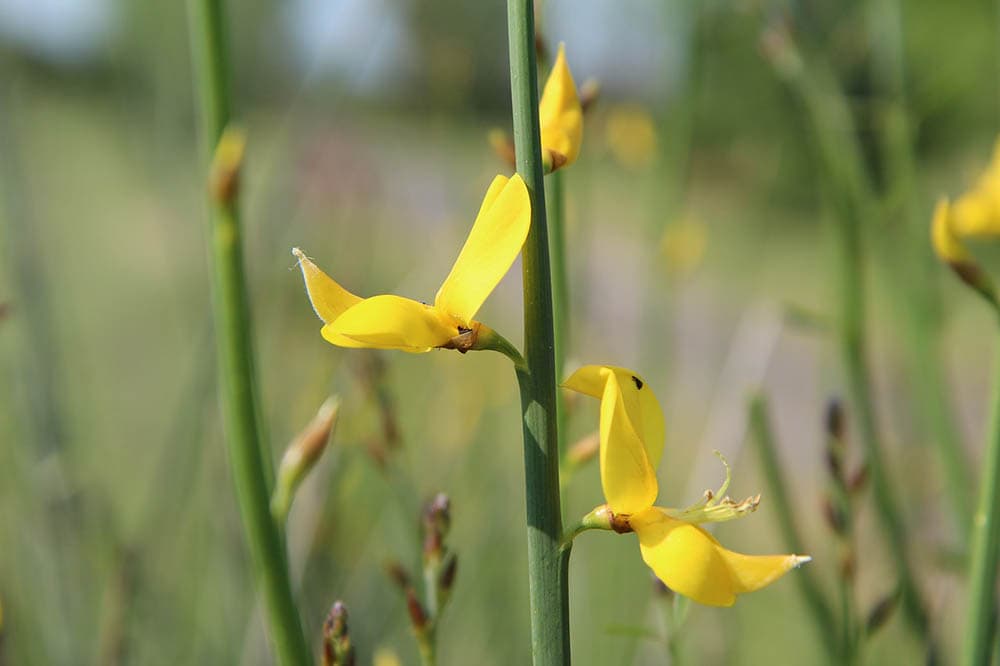
| Scientific Name: | Cytisus scoparius |
| Hardiness Zones: | 6-9 |
| Height: | 3-10 feet |
The Scotch broom is a unique plant that actually belongs to the legume family. These stems can grow to be 10 feet tall and offer golden yellow flowers that cover the stems completely during the summer months.
Even though these flowers are gorgeous, it is important to grow them responsibly. Scotch broom is considered an invasive species and weed in a variety of countries, including North America, Australia, India, and New Zealand.
23. Snapdragons
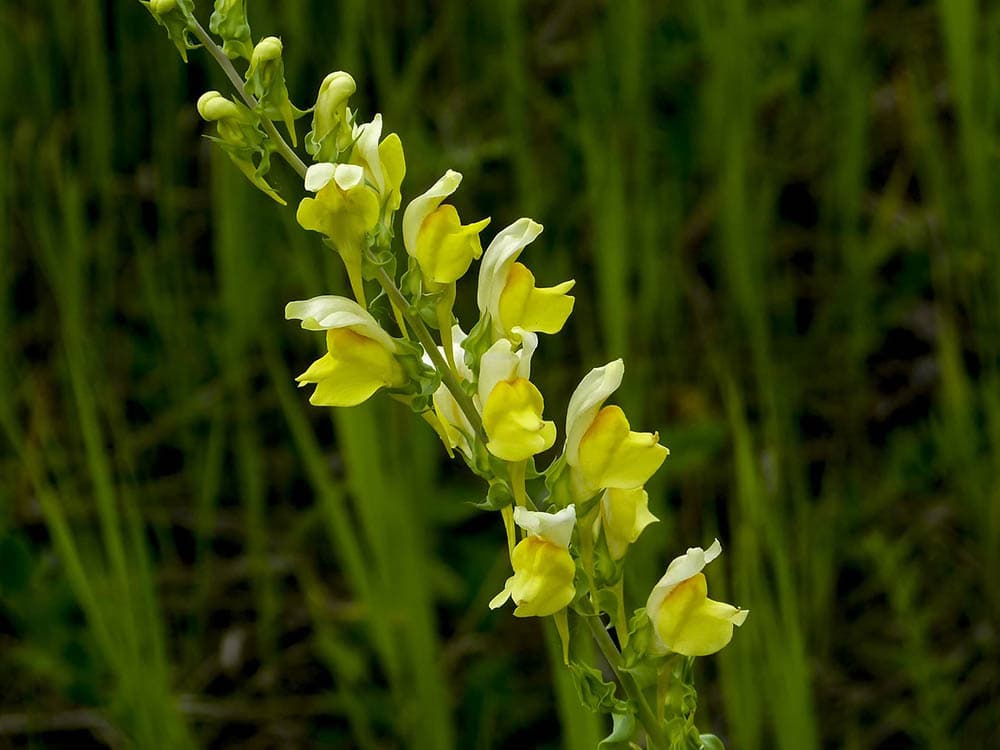
| Scientific Name: | Antirrhinum |
| Hardiness Zones: | 7-11 |
| Height: | 6-20 inches |
Snapdragons can come in many colors, including yellow, pink, red, and combinations. These flowers are loved in rocky gardens and cottage gardens because they grow upwards and are relatively easy to grow.
24. St. John’s-Wort
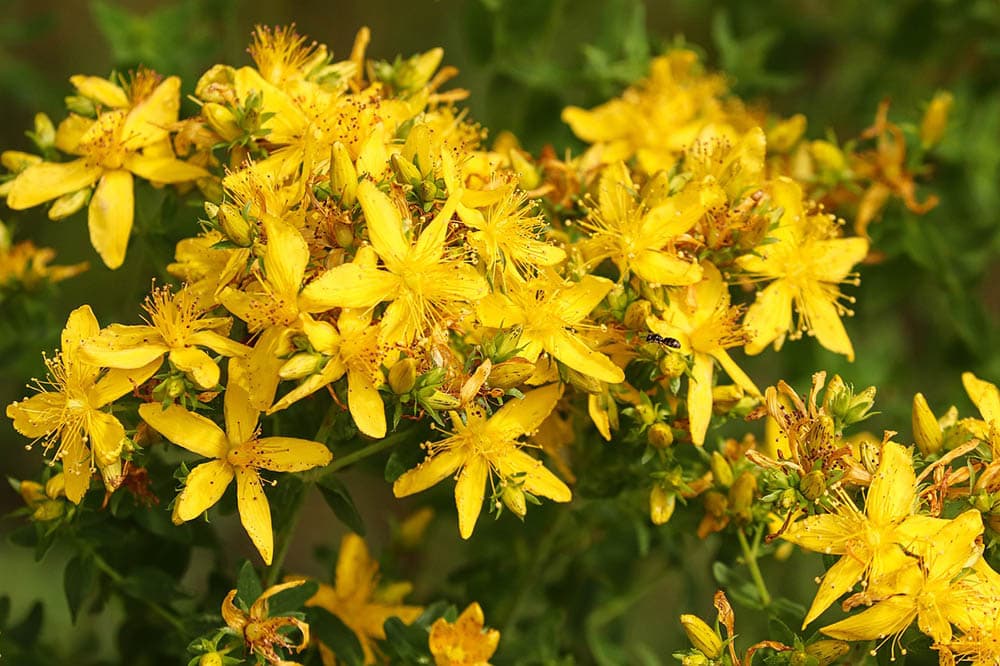
| Scientific Name: | Hypericum perforatum |
| Hardiness Zones: | 6-10 |
| Height: | 24 inches |
If you want a garden that grows beautiful flowers for medicinal purposes, St. John’s-wort is one of the best options. St. John’s-wort has a unique flower head, but it is often used as an herbal supplement to treat insomnia, depression, and other similar illnesses.
If you decide to plant St. John’s-wort, always talk to your doctor before using it for medicinal purposes. St. John’s-wort is known to interact with other medications.
25. Sunflower
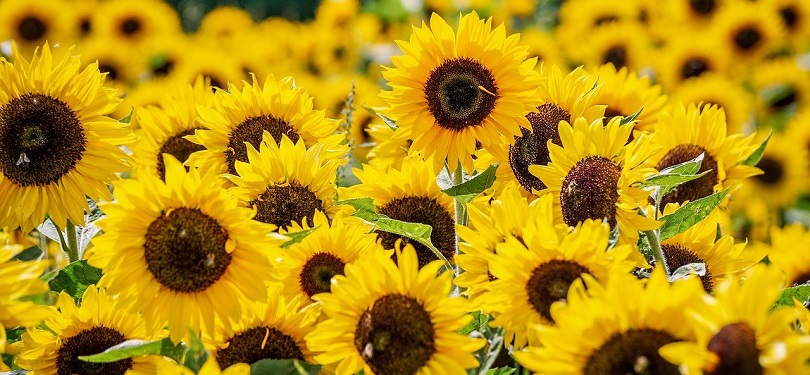
| Scientific Name: | Helianthus |
| Hardiness Zones: | 4-9 |
| Height: | Up to 14 feet |
Hands down, one of the most popular yellow flower types is the sunflower. The sunflower is named directly after the sun because of its yellow center, yellow leaves, and ray-like petals. In total, there are 70 types of sunflowers.
One thing that’s unique about sunflowers is that these flowers actually follow the sun after blooming. This allows the flowers to soak up a lot of energy and change their position throughout the day.
26. Tickseed
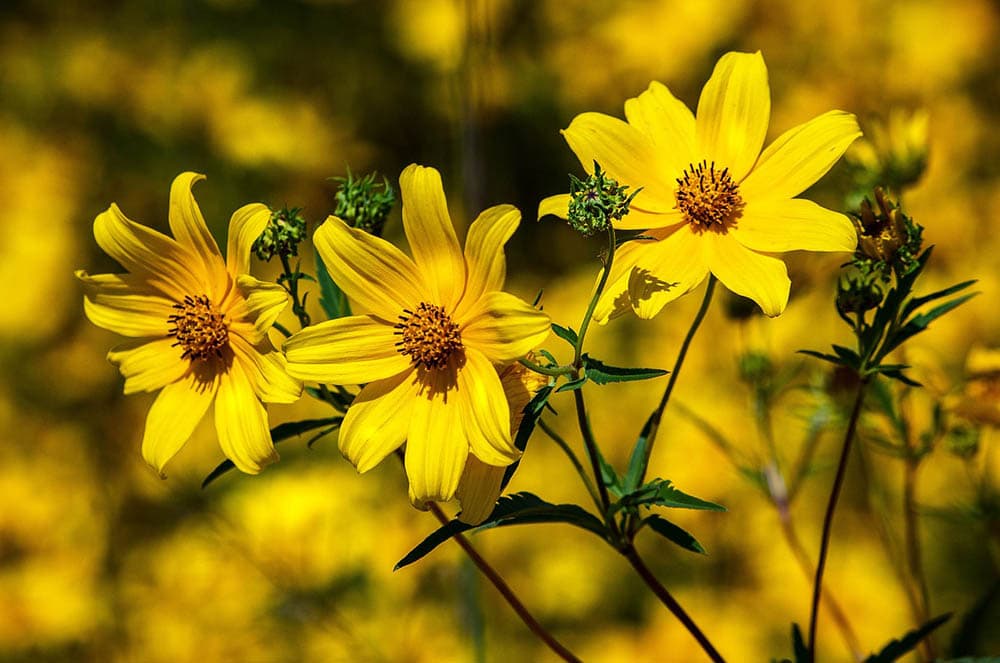
| Scientific Name: | Coreopsis |
| Hardiness Zones: | 4-10 |
| Height: | 4-8 feet |
The Tickseed is aptly named because of the small fruit on these flowers. Even though the fruit looks like a creepy-crawly tick, the flowers are incredibly beautiful and make a great choice of yellow flowers to add to your garden.
Plus, Tickseeds are known for attracting pollinators. In other words, these flowers can help attract insects to further spread your garden and its beauty, despite its creepy-crawly name.
27. Tulip
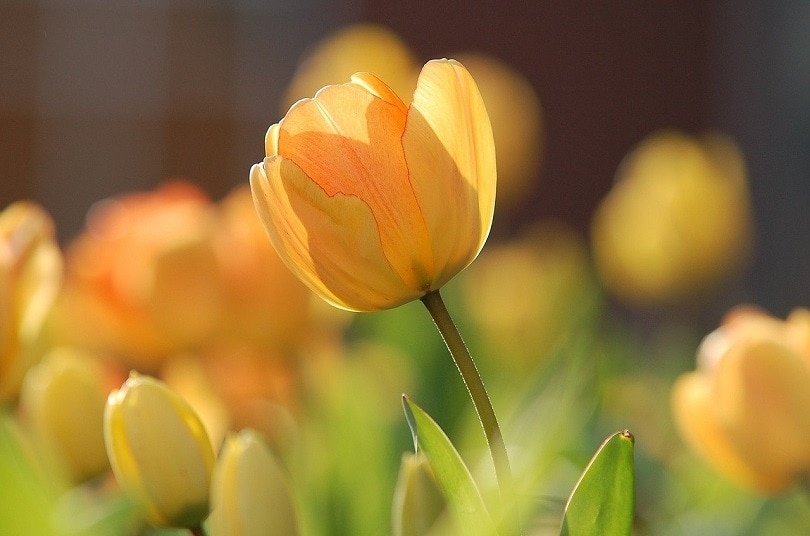
| Scientific Name: | Tulipa |
| Hardiness Zones: | 3-8 |
| Height: | 5-12 inches |
Tulips are some of the most popular flowers around. In fact, tulips were used as currency at one point. Yellow tulips specifically relate to cheerfulness, hope, and joy.
28. Wishbone Flower
| Scientific Name: | Torenia fournieri |
| Hardiness Zones: | 2-11 |
| Height: | 6-12 inches |
Wishbone flowers are not quite as yellow as some of the other yellow flowers on this list. Instead, this plant has trumpet-shaped flowers that can come in many colors. Often, these flowers are white.
The reason we listed the wishbone flowers as a yellow flower is because most varieties have yellow markings on the leaves. As a result, the yellow markings pop off the petals of these trumpet flowers.
29. Yarrow
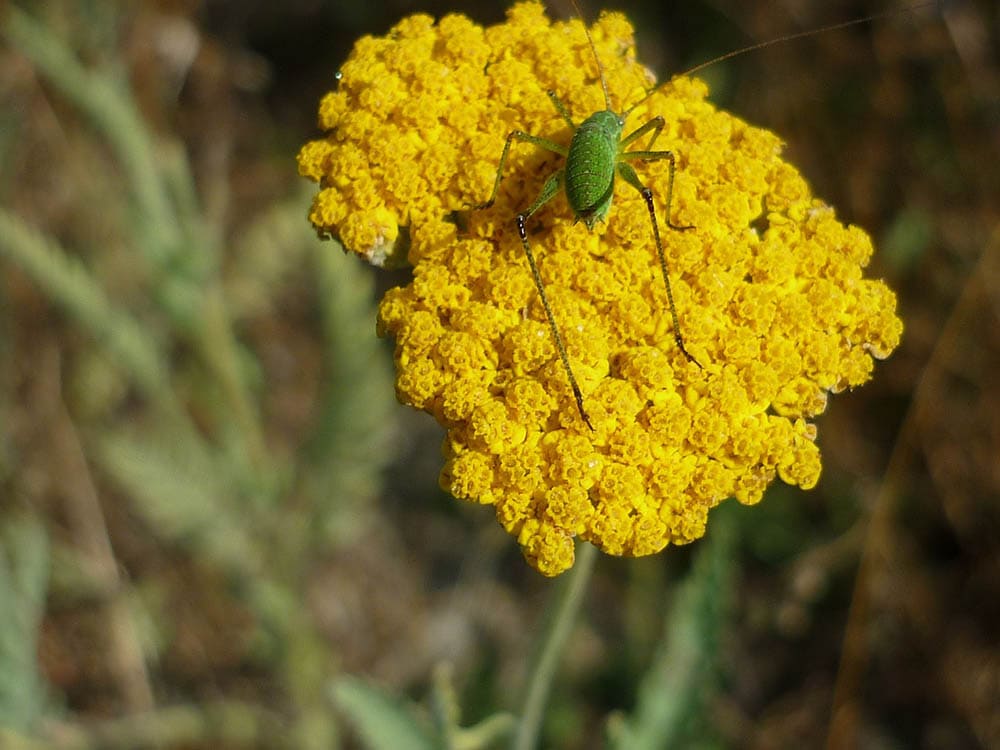
| Scientific Name: | Achillea |
| Hardiness Zones: | 3-9 |
| Height: | 24-36 inches |
The yarrow produces fuzzy leaves with clusters that grow flat on top. What’s unique about yarrow is that its scientific name comes from mythology. It is said that Achilles used yarrow on his soldiers to treat their wounds during the Trojan War.
30. Yellow Coneflower
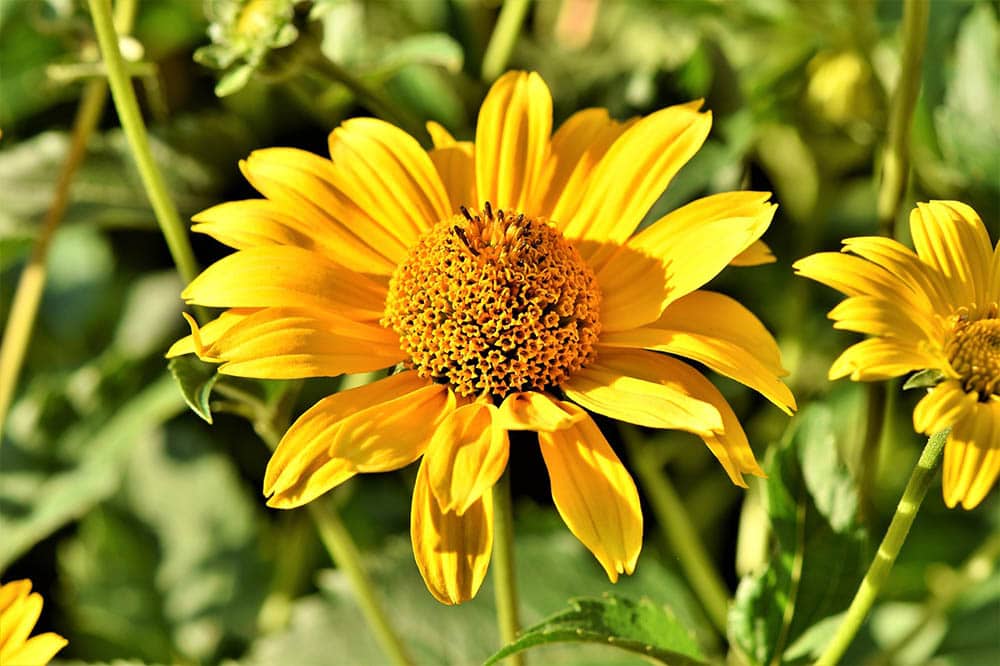
| Scientific Name: | Echinacea paradoxa |
| Hardiness Zones: | 3-9 |
| Height: | 36 inches |
The yellow coneflower is aptly named because its center points upwards, whereas the yellow petals droop downwards, almost like an upside-down cone. If you are more familiar with the badminton shuttlecock, the yellow coneflower looks very similar.
These echinacea plants are often found in dry areas, such as the prairies and grasslands of the mid-United States.
31. Yellow Oleander
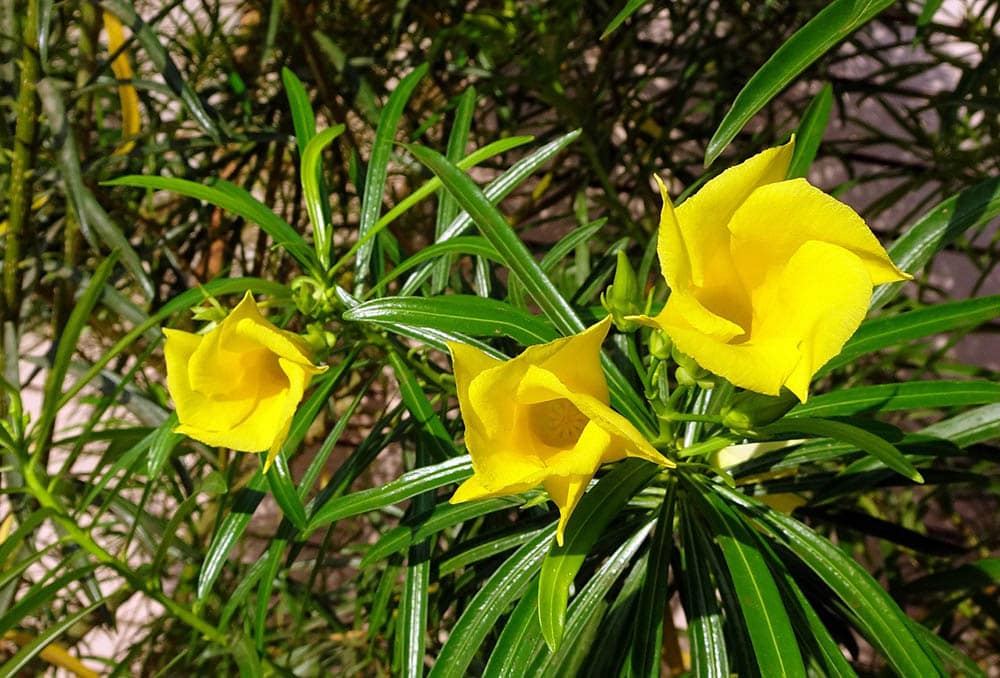
| Scientific Name: | Cascabela thevetia |
| Hardiness Zones: | 8-10 |
| Height: | 7 feet |
The yellow oleander is not technically a flower. Instead, it is an evergreen tree or shrub. The reason why it is on this list is that it has beautiful yellow flowers on the plant. The flowers are bell-shaped and yellow.
Interestingly, the scientific name of this flower could translate to mean snake rattle, rattlesnake, or small bell. So, the scientific name might refer to the shape of the yellow flowers or the toxicity of the plant, but it is unclear which.
32. Yellow Rose

| Scientific Name: | Rosa |
| Hardiness Zones: | 6-10 |
| Height: | 8-12 feet |
The rose needs practically no introduction. Even though most people associate roses with the deep red color sold on Valentine’s Day, there are tons of yellow roses as well. In fact, there are over 300 species of yellow roses specifically.
Some popular yellow roses include the Lady Banks, yellow Persian, sulfur, and Julia Child rose. All these roses have yellow petals and are often associated with friendship and affection.

Conclusion
As you can see, there are a ton of yellow flowers that you can grow in your garden. No matter where you live, you should be able to find one that fits into your hardiness zone, all while still looking gorgeous.
Just make sure to check with invasive species lists in your area to ensure that the yellow flower you plant is not a threat to your community.
Featured Image Credit: pixel2013, Pixabay
Contents

